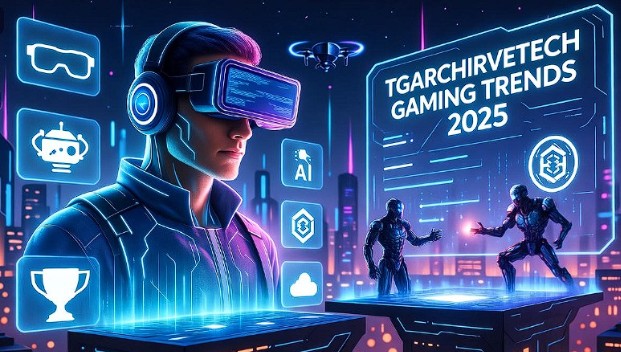
QuantumBook
The 21st century is characterized by rapid technological advancements that have reshaped various facets of society, and education is no exception. Technology has woven itself intricately into the fabric of modern education, transforming the ways in which we teach and learn.
This essay embarks on a comprehensive exploration of the multifaceted role of technology in modern education, delving into its impact on pedagogy, student engagement, access to information, and the broader landscape of learning. As technology continues to evolve, its integration into education holds the potential to reshape traditional models, transcend geographical boundaries, and empower students to thrive in an increasingly interconnected and digital world.
Technological Advancements and Pedagogical Innovation
The marriage of technology and education has given rise to innovative pedagogical approaches that transcend the limitations of traditional teaching methods.
Personalized Learning: Technology has revolutionized the concept of personalized learning, leveraging data-driven insights to adapt instruction to individual students’ learning styles, paces, and preferences. Adaptive learning platforms analyze students’ responses and progress, allowing educators to tailor the content and pace to suit each student’s unique needs. This approach not only enhances comprehension but also boosts retention by catering to diverse learning modalities.
Blended Learning: The convergence of physical and digital learning environments has ushered in the era of blended learning. With online platforms and resources, students can access educational content beyond the confines of the classroom. This liberates in-person sessions for interactive discussions, problem-solving activities, and collaborative projects that encourage critical thinking and real-world application.
Interactive Content: The integration of multimedia tools, simulations, and virtual labs has transformed the learning experience from passive reception to active engagement. Complex scientific concepts become tangible through interactive simulations, historical events come alive through immersive digital recreations, and abstract theories are elucidated through dynamic visualizations. This experiential engagement not only deepens understanding but also ignites students’ curiosity and thirst for exploration.
Flipped Classroom Model: The advent of technology has catalyzed the popularization of the flipped classroom model. In this approach, students access lecture materials, readings, and instructional videos online before class. Classroom time is then dedicated to collaborative activities, problem-solving exercises, and discussions that require critical analysis and application of knowledge. This dynamic shift fosters higher-order thinking skills and peer-to-peer learning.
Enhanced Student Engagement and Participation
Technology has breathed new life into classrooms by harnessing its ability to engage and captivate students through interactive and immersive experiences.
Gamification: The infusion of educational games and gamified platforms has revolutionized student engagement. By incorporating elements of competition, challenge, and reward, educators leverage gamification to make learning enjoyable and foster intrinsic motivation. Students navigate through challenges, solve puzzles, and achieve milestones, all while mastering academic content and honing critical thinking skills.
Virtual Reality (VR) and Augmented Reality (AR): These emerging technologies have transformed the learning landscape by immersing students in virtual environments that simulate real-world scenarios. History comes to life through virtual tours of ancient civilizations, scientific experiments unfold in simulated labs, and complex data sets are visualized in three-dimensional spaces. VR and AR enhance comprehension by offering experiential learning opportunities that engage multiple senses and foster deep connections.
Online Collaboration Tools: The digital realm has bestowed educators and students with an array of collaborative tools that transcend geographical limitations. Online platforms enable students to collaborate on projects, share ideas, and engage in discussions, irrespective of physical proximity. This fosters a sense of teamwork, encourages cross-cultural communication, and prepares students for the collaborative nature of the modern workforce.
Digital Assessments: The evolution of technology has revolutionized assessment methodologies, moving beyond traditional pen-and-paper exams. Online quizzes, interactive assignments, peer-reviewed projects, and multimedia presentations allow educators to gauge understanding in diverse ways, catering to various learning styles and providing timely feedback for improvement.
Access to Information and Global Learning
Technology’s most profound impact on education lies in its democratization of access to information and its potential to facilitate cross-cultural learning experiences.
Online Resources: The internet, often referred to as the “information superhighway,” has democratized access to knowledge. Educational content, including open-access textbooks, video lectures, and scholarly articles, is now available at the fingertips of students. Learners can delve into subjects beyond the confines of their prescribed curriculum, fostering independent inquiry and nurturing a love for lifelong learning.
Massive Open Online Courses (MOOCs): The advent of MOOC platforms has transformed the educational landscape by making high-quality courses from esteemed institutions accessible to a global audience. Learners, irrespective of geographic location, can enroll in courses on a wide range of topics, broadening their horizons and acquiring new skills without the constraints of traditional boundaries.
Virtual Conferences and Workshops: Technology has transcended the limitations of physical presence, enabling participation in global conferences, workshops, and seminars. Students can virtually attend sessions hosted by thought leaders and experts from around the world, exposing them to diverse perspectives, cutting-edge research, and interdisciplinary dialogue.
Language Learning Apps: In an increasingly interconnected world, language skills have become indispensable. Technology-driven language learning apps and platforms offer interactive lessons, real-time practice, and cultural insights, empowering students to develop proficiency in languages other than their native tongue.
Challenges and Considerations
While the integration of technology into education holds immense promise, it also poses a range of challenges that require thoughtful consideration and strategic planning.
Digital Divide: One of the most pressing concerns is the digital divide—the disparity in access to technology and reliable internet connectivity. The chasm between those with abundant resources and those without can exacerbate existing educational inequalities. It is imperative that institutions and policymakers work collectively to ensure equitable access for all students.
Privacy and Security: The collection of student data, ranging from performance metrics to personal information, raises concerns about privacy and data security. Educational institutions must implement robust measures to safeguard sensitive information and adhere to stringent data protection regulations.
Digital Literacy: As technology becomes integral to education, students and educators alike must cultivate digital literacy skills. This encompasses the ability to navigate online resources, critically evaluate information, differentiate between credible and misleading sources, and effectively use technological tools for learning.
Distraction and Cognitive Load: While technology enhances engagement, it also introduces the potential for distraction and cognitive overload. Excessive screen time, constant notifications, and the allure of social media can hinder sustained focus and deep engagement with educational content. Striking a balance between technology use and focused learning is imperative.
Future Prospects
As technology continues its relentless march forward, its role in education is poised for continued evolution, promising transformative shifts in the way we teach and learn.
Artificial Intelligence (AI) in Education: The integration of AI-driven systems holds the promise of even more personalized and adaptive learning experiences. AI can analyze student performance, identify learning gaps, and provide real-time recommendations for tailored instruction. Educators can leverage AI-generated insights to optimize teaching strategies and support individualized student progress.
Blockchain for Credentialing and Certification: Blockchain technology, with its inherent security and transparency, is poised to revolutionize credential verification and the recognition of academic achievements. Blockchain can streamline the process of validating certificates, degrees, and achievements, providing a tamper-proof digital record that is easily accessible and universally recognized.
Virtual Labs and Simulations: As VR and AR technologies continue to evolve, they will offer more sophisticated virtual labs and simulations. Students will be able to conduct intricate experiments, explore intricate biological processes, and simulate complex engineering scenarios in risk-free digital environments. This not only enhances practical learning opportunities but also bridges the gap between theoretical understanding and real-world application.
Lifelong Learning and Professional Development: The dynamic landscape of technology-driven education extends beyond traditional academia. Online courses, microcredentials, and continuous learning platforms have emerged as essential tools for upskilling and reskilling the workforce in a rapidly changing job market. Professionals can engage in self-directed learning to remain competitive, adapt to industry shifts, and explore new career pathways.
To pen down, the integration of technology into modern education has ushered in a paradigm shift that transcends the confines of traditional classrooms. From personalized learning experiences to global collaborative projects, technology has the power to engage, empower, and inspire students on their educational journeys.
As technology continues to shape the educational landscape, educators, policymakers, and students must collaborate to harness its potential while addressing its challenges. By embracing the transformative capabilities of technology, education can evolve into a dynamic, accessible, and immersive endeavor that equips students with the skills, knowledge, and adaptability they need to thrive in the digital age and contribute meaningfully to the global community.
By: Samarth
Write and Win: Participate in Creative writing Contest & International Essay Contest and win fabulous prizes.


